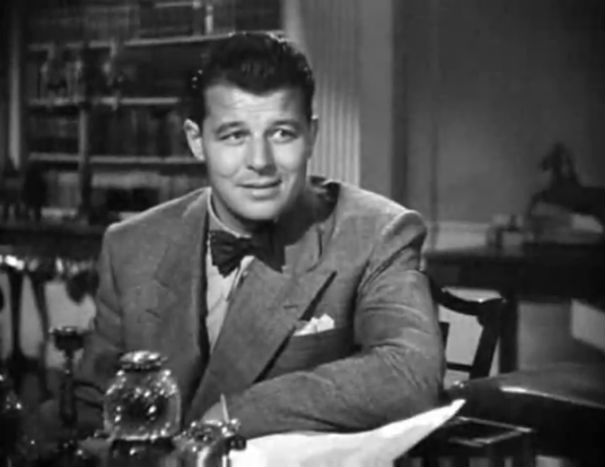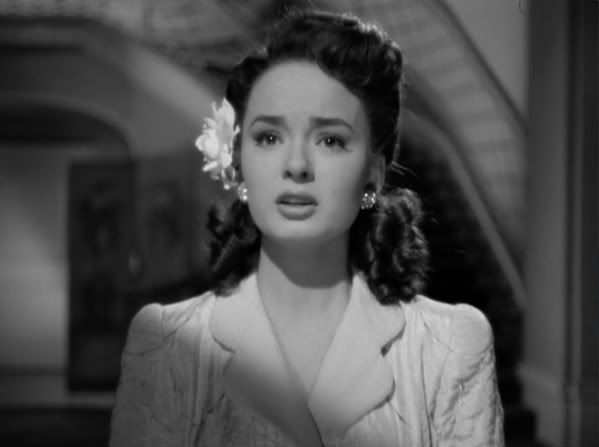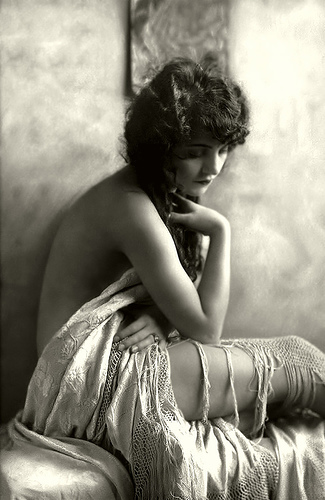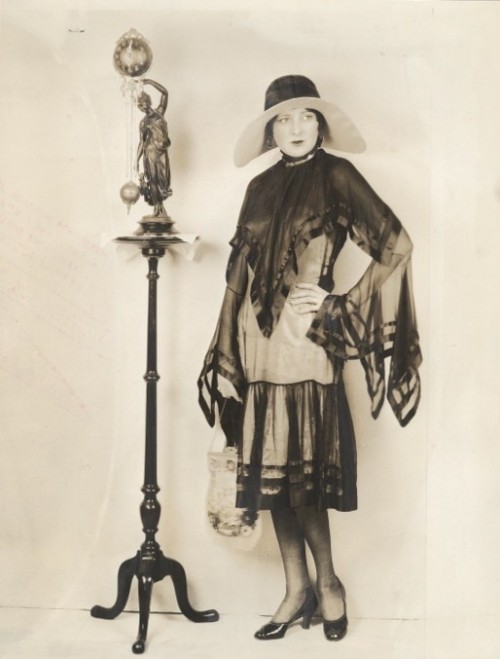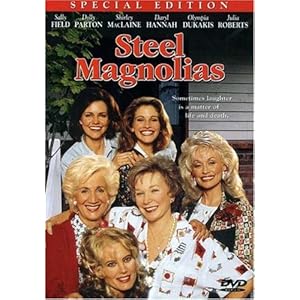Imagine my excitement and hysteria upon learning that HBO was filming a 5 hour miniseries of Mildred Pierce and starring the incredible Kate Winslet. Barely could I wait for the DVD release (as we do not currently have HBO). I spent all afternoon last Sunday watching the miniseries and it left me . . . disappointed.
Let me explain. Part of the reason the 1945 version (hereafter known as the Crawford version) is so well done is its incredible tautness and the quick pacing of the slow burn that's happening. Sounds like an oxymoron but watch it and you'll see. The film opens with a murder, drawing you in immediately, and it moves rapidly in flashback for the next 2 hours.
The 2011 version (or the Winslet version) has a very, very slow burn. So slow in fact that the first hour was covered in the first ten minutes or so of the Crawford version. In fact, the first hour was dull. I'm sorry but there it is. I kept waiting for something to happen and was still waiting as the second hour began. The real action, as I see it, didn't really start until the final (fifth) hour. Four hours is a lot of time to invest for the last hour's payoff, let's be honest.
However, to be fair to the Winslet version, the period detail was stunning. Everything looked like 1931 (at least from my eye - - not that I was around in 1931 but as a serious connoisseur of 1930s movies, it appeared legit), from the hairstyles to the clothing to the furnishings and cars. I also loved, loved the detail of Mildred's Spanish style house (the first and second ones) and was seriously jonesing for my own Spanish hacienda after the viewing.
Not that the Crawford version was lacking. In that film, Mildred also had a pretty little Spanish bungalow, complete with the arches and tile floors. What daughter Veda may have bemoaned as common Glendale drudgery is sought after today. However, this version had two hours to tell its story, rather than five leisurely ones, and so the attention to set detail was not as strong.
So let's break it down, piece by piece, on which Mildred Pierce is the better (with the Crawford version's players being listed first). Warning: possible spoilers ahead.
 Joan Crawford vs. Kate Winslet: Both are well known and respected thespians. Crawford was not considered a serious actress in her lifetime, despite winning the Academy Award for her portrayal of Mildred and receiving another two nods after, while Winslet has been considered one of the better actresses of her generation since the start of her career. Watch Winslet as Marianne in Emma Thompson's Sense and Sensibility and no one else will ever be able to be as convincing and heartbreaking a Marianne as she. Both beautiful women, Winslet was made plainer for the role while Crawford still looked stunning (even while wearing dresses from Sears Roebuck). Winslet had more than double the time Crawford did to make Mildred work and make the audience sympathize with, relate to and love Mildred. Crawford, as mentioned, won an Academy Award for her portrayal; Winslet won an Emmy. So who emerges victorious in the battle of the Mildreds?
Joan Crawford vs. Kate Winslet: Both are well known and respected thespians. Crawford was not considered a serious actress in her lifetime, despite winning the Academy Award for her portrayal of Mildred and receiving another two nods after, while Winslet has been considered one of the better actresses of her generation since the start of her career. Watch Winslet as Marianne in Emma Thompson's Sense and Sensibility and no one else will ever be able to be as convincing and heartbreaking a Marianne as she. Both beautiful women, Winslet was made plainer for the role while Crawford still looked stunning (even while wearing dresses from Sears Roebuck). Winslet had more than double the time Crawford did to make Mildred work and make the audience sympathize with, relate to and love Mildred. Crawford, as mentioned, won an Academy Award for her portrayal; Winslet won an Emmy. So who emerges victorious in the battle of the Mildreds? The Winner: Joan Crawford. Crawford is simply amazing and mesmerizing in the role. Say what you will about her early parts and cookie cutter MGM roles but damn, the woman could act in the right role (see also Possessed and A Woman's Face for further support). Her Mildred's quiet desperation comes off the film like a stink, as well as her unwavering support and blind adoration of Veda and her steely determination as a sharp businesswoman. She was Mildred, in every sense of the word and watching her is an absolute delight. She owns this role. This is the role she is most remembered for and deservedly so. While Kate Winslet, as always, delivers and turns in a wonderful performance, her Mildred is just lacking in that special something that Crawford delivered in spades.
Jack Carson vs. James LeGros: The character of Wally (Wally Fay in the Crawford version; Wally Burgan in the Winslet version) is a pivotal one and despite LeGros doing a fine job with what he had, there was simply no way to top Carson, who stole every scene he was in of nearly every movie he was in. The Crawford version had Wally as a "Hi, howya doin'" kind of guy, the kind of guy who would remark on Mildred's legs but wouldn't necessarily get up close and personal with those legs. The Winslet version depicted Wally as much more of a dishonest businessman who had no qualms stiffing his business partner, Bert Pierce, of commission and then stiffing his wife Mildred when the couple split.
The Winner: Jack Carson. He made Wally fun and someone that Mildred could truly count on while building her empire. He seemed larger than life and brought a much needed lightness to the seriousness of the film.
Zachary Scott vs. Guy Pearce: Monte Beragon was a horribly sympathetic character to me in the Crawford version, perhaps due to Zachary Scott's portrayal, while he was less so in the Winslet version (not that it was necessarily any fault of Guy Pearce's). Scott's Monte was a man who had been a member of that infamous upper crust, who had fallen and fallen hard. He still retained his charm and I could easily understand how Mildred would fall for him. I could also understand how Mildred could support him for years and eventually marry him. Pearce's Monte had a sexual vibe Scott's did not (thanks, perhaps, in part to HBO's ability to showcase nudity and sex scenes) and I felt less like Pearce's Monte was a man on the edge than just a grifter. Pearce was good looking, yes, but I couldn't quite fathom why Mildred supported him and eventually married him. Mildred's decision to marry Monte was explained quite well in the Crawford version but was left unclear in the Winslet version. Scott's turn also left me in no doubt of his love, as well as his resentment, of Mildred and I didn't quite get the same feeling from Pearce's turn.
The Winner: Zachary Scott. Pearce did an admirable job but the win goes to Scott for making what could have been a pathetic unsympathetic character into a likable one that I wanted to redeem.
Ann Blyth vs. Morgan Turner and Evan Rachel Wood: Other than Mildred herself, the character of Veda was the most important character in both productions (as well as the book). Veda was supposed to be a manipulative, charming devil who appeared a sweet and pretty angel. Even her mother Mildred was blinded by her faults and selfish behavior for years. Blyth portrayed Veda in the Crawford version from about age 14 until 18 or 19, as the script had the action take place over the course of a handful of years rather than the 10 year or so span depicted in the Winslet version . . . and she did a stellar job. She easily handled Veda as a young teen who aspired to be a member of society, wanting more than having a mother who baked pies for neighbors and waited tables. Her method of speaking "upper class" felt genuine, as a girl who wanted to be someone she was not. Blyth also smoothly transitioned into Veda as a scheming young woman who would do anything for money and status. Crawford's reaction to realizing exactly how manipulative and scheming Veda was is utterly flawless and breathtaking, as is her chemistry with Blyth. Blyth's end scene, with her almost complacent acceptance of her actions and future, is chilling and perfectly done. By comparison, the Winslet version had two actresses portraying Veda. Morgan Turner portrayed Veda throughout the majority of the miniseries, as a young teen. While Turner did a very commendable job on the piano she didn't quite sell Veda as the spoiled and social climbing teen. Her scenes with Winslet felt a bit forced and they lacked the cool smoothness that Blyth brought across. Evan Rachel Wood, portraying Veda as an adult, honestly just looked and felt too old for the part. She lacked the soft vixen quality Blyth had and came across as a self absorbed party girl who would be on the prowl for her own father if she could make a dime off it. Her emotional scenes bordered on hysteria versus controlled manipulation.
The Winner: Ann Blyth, who was rightfully nominated for an Academy Award for this career changing role (although she lost to Anne Revere). After Blyth's turn as Veda, it's hard to imagine any other actress capable of pulling off the perfect combination of sweet innocence and evil charm.
Eve Arden vs. Mare Winningham. Along with Wally, the character of Ida gave some much needed comedy and lightness to Mildred Pierce. In the Crawford version she was more of a humorous sidekick, providing such classic lines as "Personally, Veda's convinced me that alligators have the right idea. They eat their young." and "When men get around me, they get allergic to wedding rings." Eve Arden was the perfect foil to the simmering Crawford and her comedic timing and talent would go on to serve her well on television. Mare Winningham is a first rate actress (she was the only saving grace in that addictive hot mess St. Elmo's Fire) and her Ida followed suit, with a much more dramatic turn. Rather than providing Winslet's Mildred with witticisms she managed the businesses and did so with the directness of a drill sergeant.
The Winner: Eve Arden. Winningham gave a solid performance but I felt as if I knew much more about Ida in the Crawford version. Arden's performance was more likeable, more down to earth and infinitely more entertaining. She can run a restaurant, balance the books and crack a mean joke? Winner!
Bruce Bennett vs. Brian F. O'Byrne. Mildred's husband Bert is vital to the story, although he is very much a secondary character all things considered. His infidelity and ultimate leaving is the impetus for Mildred waiting tables and eventually becoming a businesswoman so in a sense he drives all the action for the remainder of the story. Bruce Bennett does a respectable job with his part, which was really a supporting role moreso than anything else. He is seen at the beginning of the Crawford version, at the end and a few shots in between but really doesn't garner much screentime. Brian F. O'Byrne is given much more of an opportunity to make Bert Pierce his and give the character some depth. Despite his leaving fairly early on, he does pop up and show why Mildred fell in love with him as he's shown to have a decently solid character.
The Winner: Brian F. O'Byrne. O'Byrne wins this one through no fault of Bennett's. He had much more to work with as Bert Pierce was far more developed in the Winslet version. He gave a nuanced and subtle performance as a husband who, sick and tired of going to work day in and day out, returning home to a wife making pies and a spoiled rotten daughter, turns to a neighbor for excitement. Bert Pierce is hardly the most sympathetic character in the story but O'Byrne manages to make him a good guy, one that I actually wished Mildred would give another chance to and get back together with.
Ranald MacDougall vs. Todd Haynes. Ranald MacDougall is credited as the main screenwriter for the Crawford version, adapting James M. Cain's novel for the screen (although there were uncredited writers also working on the script, including William Faulkner). MacDougall not only had to make his version fit in the standard and acceptable two hour window he also had to make it digestible for the post-war audience who demanded women's films with a strong lead and a relatively happy ending. Therefore, MacDougall had to stray from Cain's novel version and "film noired" Mildred Pierce with spectacular results. The murder that began his film never existed in the book, nor did the ending that wrapped everything up and gave a satisfying ending to Mildred, as well as giving Veda was what coming to her. Todd Haynes, on the other hand, remained faithful to Cain's version, with no murder and a somewhat unsatisfying and non-ending ending. He had five hours in which to tell Mildred's story and he was able to utilize and create characters that did not make it into the Crawford version.
The Winner: Ranald MacDougall. Despite being unfaithful to the Cain version, MacDougall's script is snappy, fast paced and keeps you on the edge of your seat - - compared to Haynes' script which is positively bloated and lethargic by comparison. Although Haynes gives us more detail than MacDougall could provide, some of the scenes seem unnecessarily long and/or just plain unnecessary. MacDougall managed to write what was important to keep the story interesting and fresh and it remains so, nearly 70 years down the road.
Michael Curtiz vs. Todd Haynes. Michael Curtiz famously did not want to direct Crawford, whom he considered a has been, but by the end of the shoot adored her. While it speaks volumes on Crawford's professionalism, talent and overall character it also speaks as to Curtiz' ability to turn Crawford from a movie star into a legitimate actress. He was able to draw noteworthy and career making performances out of not only Crawford but also Eve Arden and Ann Blyth. Haynes did direct a beautiful performance from Kate Winslet but he did not manage to get the necessary performances from Morgan Turner and Evan Rachel Wood as Veda, either due to miscasting or just inability on one or all parts.
The Winner: Michael Curtiz. Curtiz turned out a much higher quality film, with less time and resources. His direction, along with camera angles and brilliant casting, makes his version far superior to Haynes'. He also had a few other notable films under his belt before shooting Mildred Pierce, such as The Adventures of Robin Hood, Casablanca and Yankee Doodle Dandy.
1945 vs. 2011. Given all of the above, I think it's clear.
The Winner: 1945! You simply can't top a classic and the original is the far better version. From the cast to the script to the overall feel of the movie, Crawford's version trumps Winslet's version in nearly every way. Winslet's version left me feeling exhausted (although I did watch the entire thing in one sitting) although it did give me a serious yen for Crawford's version. And the ending of Winslet's version, again while true to Cain's tale, was such a supreme disappointment it very nearly ruined the entire event for me. I only hope that someone watching the Winslet version without having seen the Crawford version would not judge the original by the remake. There is simply no comparison.
So what do you say? Have you seen both Mildred Pierces? If so, which one is the clear winner in your book?


